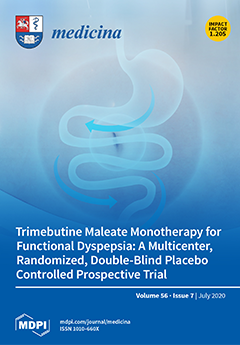Background and objectives: Breast cancer is the most common cancer among women worldwide. Early stage diagnosis is important for predicting increases in treatment success rates and decreases in patient mortality. Recently, circulating biomarkers such as circulating tumor cells, circulating tumor DNA, exosomes,
[...] Read more.
Background and objectives: Breast cancer is the most common cancer among women worldwide. Early stage diagnosis is important for predicting increases in treatment success rates and decreases in patient mortality. Recently, circulating biomarkers such as circulating tumor cells, circulating tumor DNA, exosomes, and circulating microRNAs have been examined as blood-based markers for the diagnosis of breast cancer. Although
miR-202 has been studied for its function or expression in breast cancer, its potential diagnostic value in a clinical setting remains elusive and
miR-202 has not been investigated in South Korea. In this study, we aimed to evaluate the diagnostic utility of
miR-202 in plasma samples of breast cancer patients in South Korea.
Materials and Methods: We investigated
miR-202 expression in the plasma of 30 breast cancer patients during diagnosis along with 30 healthy controls in South Korea by quantitative reverse transcription PCR.
Results: The results showed that circulating
miR-202 levels were significantly elevated in the breast cancer patients compared with those in healthy controls (
p < 0.001). The sensitivity and specificity of circulating
miR-202 were 90.0% and 93.0%, respectively. Additionally, circulating
miR-202 showed high positivity at early stage. The positive rate of
miR-202 was as follows: 100% (10/10) for stage I, 90% (9/10) for stage II, and 80% (8/10) for stage III.
miR-202 was also a predictor of a 9.6-fold high risk for breast cancer (
p < 0.001).
Conclusions: Additional alternative molecular biomarkers for diagnosis and management of pre-cancer patients are needed. Circulating
miR-202 might be potential diagnostic tool for detecting early stage breast cancer.
Full article






